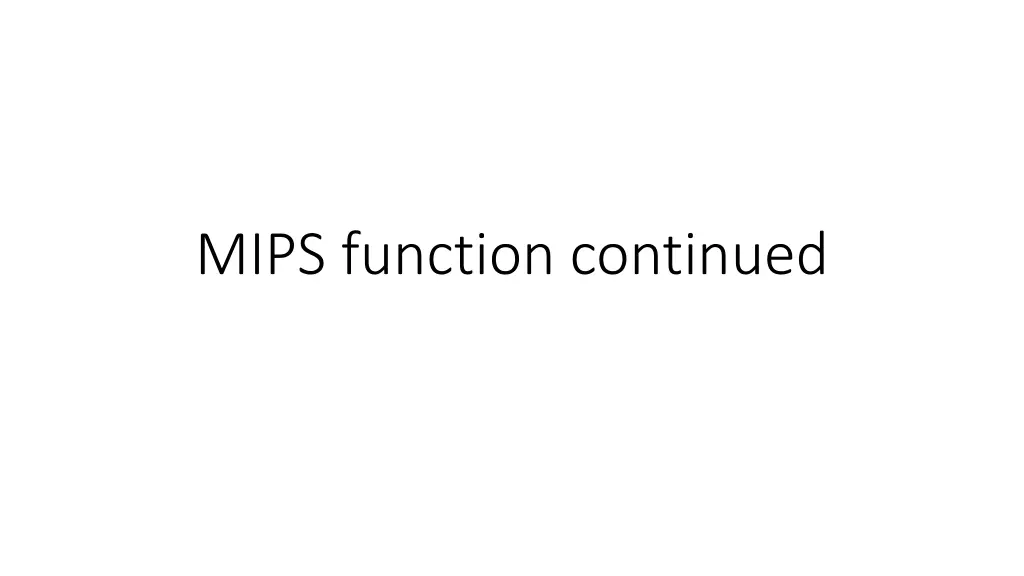
Writing Recursive Functions in Programming
Learn how to write and implement recursive functions in programming using examples in C language. Understand the concept of recursion, recursive relations, and how to create functions that call themselves until a terminating condition is met.
Download Presentation

Please find below an Image/Link to download the presentation.
The content on the website is provided AS IS for your information and personal use only. It may not be sold, licensed, or shared on other websites without obtaining consent from the author. If you encounter any issues during the download, it is possible that the publisher has removed the file from their server.
You are allowed to download the files provided on this website for personal or commercial use, subject to the condition that they are used lawfully. All files are the property of their respective owners.
The content on the website is provided AS IS for your information and personal use only. It may not be sold, licensed, or shared on other websites without obtaining consent from the author.
E N D
Presentation Transcript
Recursive functions So far, we have seen how to write A simple function A simple function that have to use the stack to save values A function that calls another function We are going to see how to write a recursive function
Recursive functions Recursive relations naturally exist, such as calculating the factorial of a number: n! = n * (n-1) * (n-2) *2 * 1 = n* (n-1)!
Recursive functions How do we write the recursive relation down in programs? In C, it will look like: int fact(int n) { int res; if (n <= 1) res = 1; else res = n * fact(n-1); return res; }
Implementing a Recursive Function It is a recursive function a function that calls itself. It will keep on calling itself, with different parameters, until a terminating condition is met. It s like writing a loop. You can also write a loop to do something over and over again, until some exiting condition is met.
The Recursive Function Let s first pretend that we have a function that can calculate the factorial of numbers, called fact_nm1, and we just need to implement the recursive step. So our job is easy: subtract n by 1, call fact_nm1, then multiply n by $v0 (which should have (n-1)!). fact: addi $a0, $a0, -1 jal fact_nm1 mul $v0, $v0, $a0 jr $ra
The Recursive Function Not going to work because we changed $ra and $a0 with calling the function, but we still need them after the call fact: addi $sp, $sp, -8 sw $ra, 4($sp) sw $a0, 0($sp) addi $a0, $a0, -1 jal fact_nm1 lw $ra, 4($sp) lw $a0, 0($sp) addi $sp, $sp, 8 mul $v0, $v0, $a0 jr $ra
The Recursive Function Hold on, we also can solve the problem in a special case, when n<2 fact: addi $sp, $sp, -8 sw $ra, 4($sp) sw $a0, 0($sp) slti $t0, $a0, 2 beq $t0, $0, fact_L1 ori $v0, $0, 1 lw $ra, 4($sp) lw $a0, 0($sp) addi $sp, $sp, 8 jr $ra fact_L1:addi $a0, $a0, -1 jal fact_nm1 lw $ra, 4($sp) lw $a0, 0($sp) addi $sp, $sp, 8 mul $v0, $v0, $a0 jr $ra
The Recursive Function Changing fact_nm1 to fact will make it work! fact: addi $sp, $sp, -8 sw $ra, 4($sp) sw $a0, 0($sp) slti $t0, $a0, 2 beq $t0, $0, fact_L1 ori $v0, $0, 1 lw $ra, 4($sp) lw $a0, 0($sp) addi $sp, $sp, 8 jr $ra fact_L1:addi $a0, $a0, -1 jal fact lw $ra, 4($sp) lw $a0, 0($sp) addi $sp, $sp, 8 mul $v0, $v0, $a0 jr $ra
What happens if we call fact(3)? First call, compare 3 with 1, call fact again fact(2). Second call, compare 2 with 1, call fact again fact(1). Third call, compare 1 with 1, return 1. Return to the state when fact(2) was called. Multiply 2 with 1, return 2. Return to the state when fact(3) was called. Multiply 3 with 3, return 6.
The Stack During Recursion 6/6/2025 week04-3.ppt 11
Two other MIPS pointers $fp: When you call a C function, the function may declare an array of size 100 like int A[100]. It is on the stack. You would want to access it, but the stack pointer may keep changing, so you need a fixed reference. $fp is the frame pointer, which should always point to the first word that is used by this function. $gp:the global pointer. A reference to access the static data.
